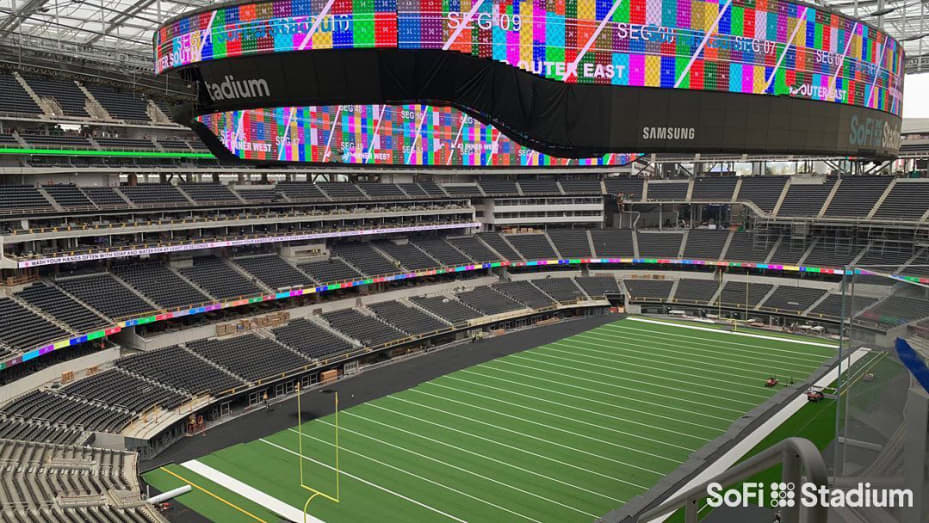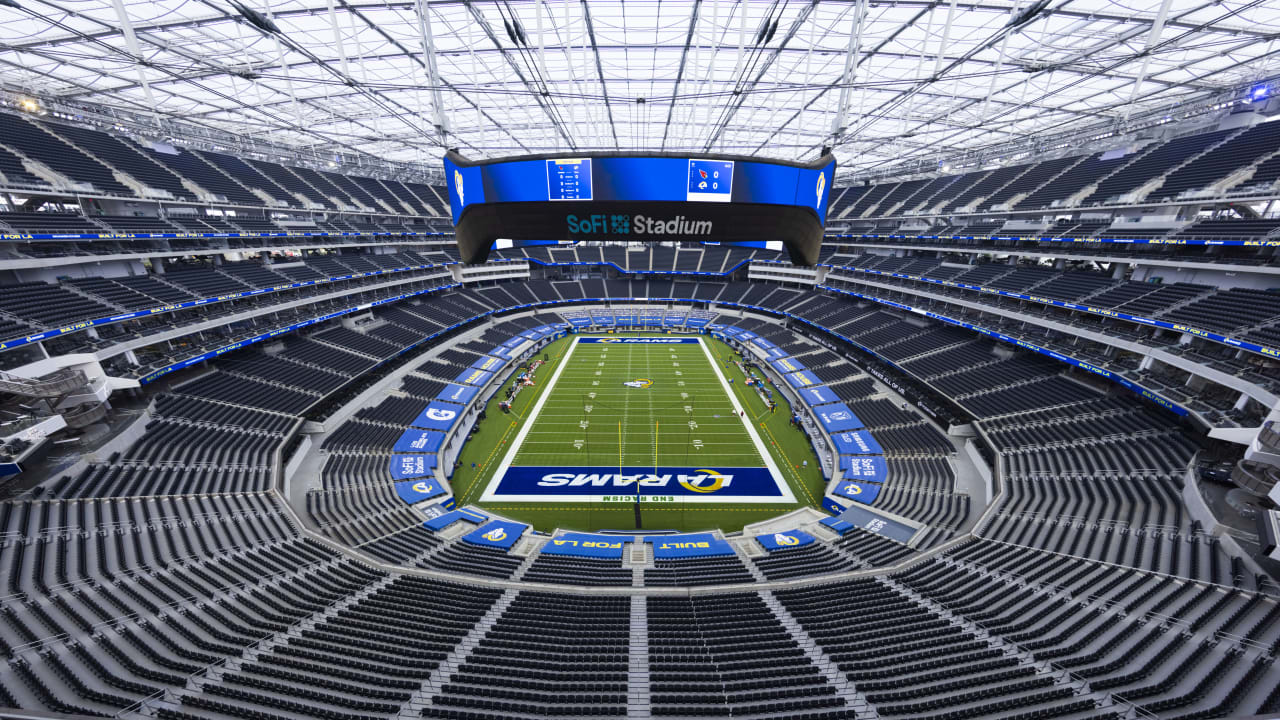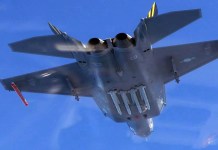The Super Bowl, the annual championship of the National Football League, is considered the most-watched television program in the US. Throughout the fall, NFL teams strive for the chance to be one of the top two teams to participate in the year’s most important game.
The Super Bowl is also a tempting event for advertisers as it has the largest live television audience and is one of the few programs where people don’t skip the commercials, an unusual occurrence in an age when viewers are widely dispersed among various streaming sites.
This year’s championship game saw both teams fighting it out with a giant 1,000-ton screen hanging over their heads, according to CNN. The largest video scoreboard (oval-shaped Infinity Screen) in professional sports was suspended 122 feet above the ground. The screen is built by South Korean electronics giant Samsung.
Although the screen has been there since mid-2020, it never hogged so much limelight like in the Super Bowl game. It was a key element inside SoFi Stadium in Inglewood, California, a large, $5 billion complex.

The massive screen provided viewers with a plethora of game data as it displayed instant replays and close-ups, as well as statistics, scores, and interactive updates.
Those sitting lower down could view the screen inside the oval, while fans higher up saw the outside, owing to 70,000 square feet of ultra-high-definition screen totaling 80 million pixels on its inside and outside surfaces.
It’s equipped with sound systems equivalent to 1,500 home cinema speakers, so no viewers would miss a referee’s call.
Samsung Elevates The Experience
Though SoFi Stadium held its maiden game in September 2020, the Covid regulations prevented fans from entering it until April 2021.
According to Mark Quiroz, vice president of marketing for Samsung Display Division, the stadium was designed by HKS, and Samsung worked with architectural drawings to maximize the spectator experience. “The pure complexity of the building, from concept to design to construction was a challenging feat,” he told CNN.
“Timing was also a very real challenge, ensuring that the Infinity Screen was ready for the NFL season opening day, a day that cannot be moved,” he said. “This was also coupled with the early days of the pandemic, and the ability to put proper health protocols in place to protect the workers.”

The event has always been the center of attention and draws a large crowd. Many sports fans, however, feel, and rightly so, that they can watch more of the game and obtain deeper insights from the comfort of their own homes.
“There is always going to be competition, as the home viewing experience has become so good with larger and sharper screens, requiring venues and technology providers (to) raise the bar on what the live fan experience needs to become to continually attract fans and guests,” Quiroz said.
A Super Blend Of Tech & Innovation
Super Bowl LVI was expected to be the most technologically advanced edition of the premier sporting event in the United States to date.
Since 2017, when highlights were made available via the Fox Sports VR app, the Super Bowl has been involved in virtual reality. The technology has advanced and spread, and this year the full game was available in an immersive virtual theater produced by VR events company Bigscreen in collaboration with Meta.
Similarly, for those watching on TV, NBC used new augmented reality (AR) capability to combine statistics and iconography into the feeds given by the game’s around 40 cameras. Pepsi’s Halftime Show mobile app featured special content and augmented reality features related to the show’s artists, which include Dr. Dre, Eminem, Snoop Dogg, Mary J. Blige, and Kendrick Lamar.
The most epic, star-studded Pepsi Super Bowl LVI Halftime Show trailer is OUT Film ??
Watch these five music titans get ready for the #PepsiHalftime Show on Feb 13th.
Watch on YouTube: https://t.co/aKVl3K7UtX pic.twitter.com/g6YtcTqJ8v
— Pepsi (@pepsi) January 20, 2022
Many corporations were expecting to make the most of their exorbitantly priced ad spots by enhancing them with augmented reality (AR). This was to introduce their products and personalities into viewers’ living rooms.
Following the game, the rock band ‘Foo Fighters’ performed a virtual reality show using Horizon Venues, an app available on Meta Quest headsets and Facebook Live.
- Contact the author at ashishmichel@gmail.com
- Follow EurAsian Times on Google News




